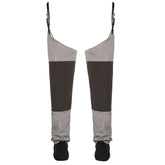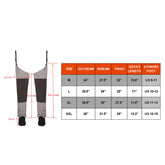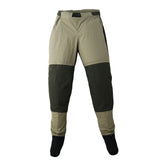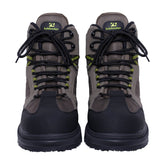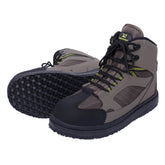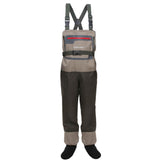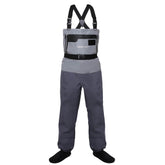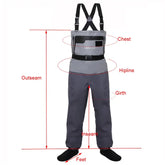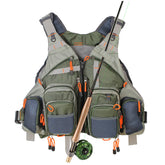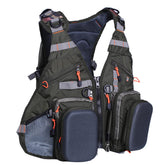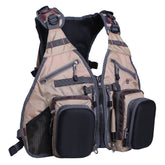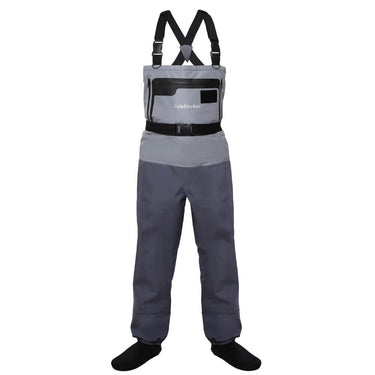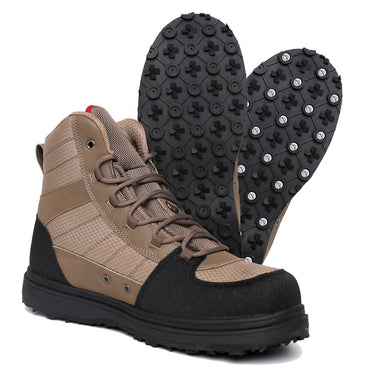Fly Fishing with Ant Patterns (Setup, Flies and More)
You are struggling to catch fish in a small stream. For some reason, the flies seem to have disappeared from your line. You have no idea what to do next, as the water starts to come alive. Suddenly, the fish start to rise and launch themselves out of the water. You can’t catch them fast enough.
This is often the deciding factor in a session. How often do we fish for the ‘good old faithful’ caddis or mayfly spinner and not get much of a chance? Even though the fish were still boiling?
Another plausible reason is that you weren't catching what the fish were eating. You should be thinking about MATCH THE HATCH. This mindset can be greatly improved by changing it up a few times a year. The answer to all these questions is the ANT pattern.
WHY DO TROUT LOVE ANTS?
One of the most effective ways to catch fish is with an ant pattern. I believe that many anglers overlook this technique due to their perception that it's not the right choice of fly. Over the past couple of seasons, I have caught several fish using ant patterns. The funny thing is that on those occasions, I was able to get a few fish quickly.
They are one of the most common food sources for trout in most areas. Ok, so they don't live in the water, but they can often be found falling into or getting blown into the water.
I love the ant pattern when it comes to catching trout, especially the smaller ones that jump out of the water. I find launching trout in my local stream to be like chasing ants or tiny midges.
WHEN TO USE ANT PATTERNS
Ant hatchlings occur throughout the year, and they are not worker ants that make their way out to fly. Instead, they are the specific ants that are sent out to establish a new colony. The reason why these send-offs occur is not entirely clear, but they usually happen around late winter or spring.
Due to how they can't fly away, the ants are an easy food source for trout. They develop an instinct to seek out these foods and focus on them instead of the hatch. Some of the most common food sources for trout include spent spinners, drowned beetles, and caddis.
When the hatchlings are established, take a minute to inspect the insect and tie on a size up or down. If the one is failing, move to the other one.
One of the most effective ways to improve the ant pattern is by changing the mythology of the "MATCH THE HATCH." For instance, if you have been struggling with a mayfly or caddis for most of the day, suddenly switching to an ant will allow you to get a quick and easy hit. This will allow the fish to see the change and take advantage of it.
MY FLY ROD SETUP FOR CASTING ANT PATTERNS
When using dry flies for this technique, ant patterns will work just as well as using a nymph rod. My preferred rod would be an 8 or 9 foot classic dry fly rod, but I have used a simple Sage Foundation 9 FT – 3WT for the last couple of years and have had no issues with it. I find the Sage Foundation to be a great rod and one that I use on a regular basis.

Leader length
I tell my students and clients that I recommend using a leader that they feel comfortable with. It is pointless fishing a leader that's 20 feet long and struggling with it. Instead, try to get the drift you need and shorten it.
I prefer to use a 15 to 20 foot leader when fishing on the dries. If I am casting in a skinny section of the river, I will shorten my leader up to 10 feet depending on the situation. One of the most important factors that I consider when it comes to fishing close-quarter situations is stealth.
Tippet size
The tippet size that you use should be 6X or smaller. You should use a light tippet for the ant patterns as you want to keep the fly moving in the right direction. If the patterns drift too stiffly, the trout will not eat.
When fighting large fish, be aware of the lighter tippet. They won't get big by being stupid, and they will fight dirty in order to get near log or snags. Fight them smart and stay away from anything that could tippet.
TIPS FOR CASTING ANT PATTERNS
The three steps to a successful dry fly take are as follows:
1.fish a pattern that closely resembles the hatch.
2.land the pattern in front of the chosen fish.
3.allow the fly to drift as naturally as possible while maintaining contact with the fly.
Unfortunately, this method is not always possible if you are not able to see the fly land. When fishing ant patterns, this is the main factor that you need to consider.
Sighting a fly is the first step in getting a good look at it. Unfortunately, most ant patterns are not caught after the rain has already stopped, and in cloudy conditions, it is hard to see the size 16 ant pattern. With a sighter, you can easily see the smaller size 16 pattern.

You should start by working the bank to the closest seam. This will allow ants to land if they get out of the trees. You can also fish the areas where there are bubbles and hydro pockets.
An angle with the wind crossing you is best when it is windy. This method can be challenging to see the pattern up or down the river. However, with a wind from your back, you can still keep the leader away from the water.
One of the most important factors that you should consider when it comes to fishing slower drift patterns is to wait a minute before casting. This will allow you to spot a rising fish. Doing so will help you plan your cast and strategy.
The ants need to move naturally in order to get the best results. When casting slower drift patterns, focus on the tippet and not on the drag.
WHAT SIZE ANT PATTERN IS BEST
The size of ant patterns can also vary depending on the area and surroundings. For instance, in my local area, the ants are usually around a size 14 to 16. However, they can grow up to a size 10 in places where my brother fishes.
When it comes to carrying a size up or down ant pattern, it is important to carry
FAVORITE ANT PATTERNS

what you expect to find. This will allow you to keep the bases covered.
1. Bionic Ant
One of my favorite patterns that I use in my local waters is a foam-style hopper. This type of fly rides higher in the water and can take a beating. However, the visual aspect of this pattern can be challenging in low-light conditions.
2. Bionic Ant 2.0
The Bionic Ant 2.0 is a highly visible version of this pattern. It can be fished in low light conditions and can be spotted from a couple of miles away.
3. Carpenter Ant
The Carpenter Ant is a higher-floating version of the flying ant that is ideal for fast-moving waters.
4. CDC Ant
One of the most overlooked ant patterns is the CDC ant. The tiny fibers of this fly act like ant's hair, and it tends to sink faster. The key to this pattern is to dress it as if it were a dry fly.
5. Flying Ant
The CDC ant is a great choice when the hatch patterns of the flying ants break out. It can also be used to imitate the reverse technique.
6. Hi-Vis Ant
The Hi-Vis Ant is a highly visible fly that features a soft buoyant seal fur dubbing over the abdomen and head. This type of pattern can be tied in smaller sizes without losing its ability to be seen.
AN EASY ANT FLY TO TIE
A simple and effective ant pattern that works every time is below. If visibility is an issue, a small sighter post can be used as a temporary fix.
LAST CAST WITH AN ANT
The choice of ant patterns is very important in order to get the most out of your fishing experience. Although you don't have to like them to be successful, you need to have a few tied to get the most out of your time.
Although they may not look like the most attractive flies, ant patterns are still highly effective when it comes to catching fish.
Article refer:
1.Choosing the Best Fly Fishing Flies
2.Fly Fishing with Ant Patterns (Setup, Flies and More)
3.Complete Guide to Fly Fishing with the Elk Hair Caddis
4.Complete Guide to Fly Fishing with the Beaded Caddis Nymph
5.Fly Fish for Bass with Poppers
6.Complete Guide to Fly Fishing with the Zebra Midge (Simple to Tie)
7.Complete Guide to Fishing and Tying the Griffith's Gnat
8.15 Best Flies for Cutthroat Trout (These Flies Work!)
9.Aquatic Fly Fishing Insects
10.Fly Fishing Starter Flies
